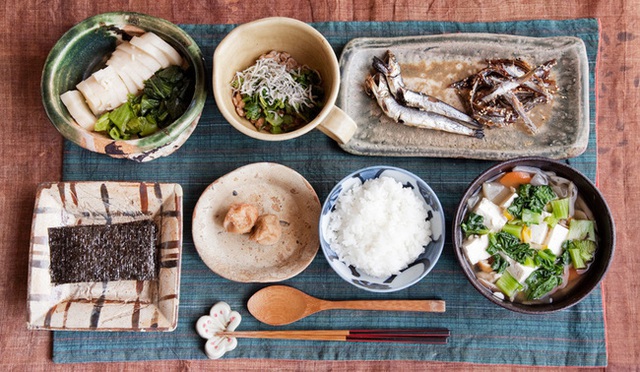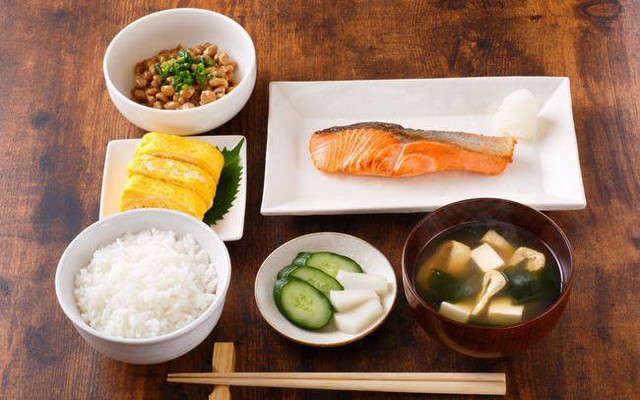“Lazy” to exercise, but why do Japanese live the longest in the world?
In 2018, according to statistics of the World Health Organization (WHO), in the list of the world’s longest-living countries, Japan ranked first with an average life expectancy of 84.2 years (female). is 87.1 years old; male is 81.1 years old). Besides, the obesity rate in Japan is also the lowest in the world.
However, for the Japanese, “life is not about exercising”. Their secret to a long, healthy life is quite simple – it’s the way they eat and drink every day in addition to the hiking habit they trained from childhood to going to work at the office.
1. Likes to eat vegetables and seafood
Needless to say, sashimi is a famous dish of the Japanese and also a typical dish when it comes to the land of the rising sun. On the Japanese table too, although there are many dishes, most of the dishes are vegetables or seafood, many fresh dishes, few fried dishes. In particular, vegetables are high in fiber, which helps reduce blood fat and cancer, while salmon and tuna contain a lot of unsaturated fat, reducing blood clotting, good for the heart.
2. Eat light and low in calories
In “Japanese Culinary Practices”, Shijo Takahiko, the fourth generation descendant of Shijo-ryu Japan has a clear statement about the country’s cuisine: “Japanese cuisine has a principle that is the deliciousness of the food. it can’t mask the original flavor of the ingredients”.
Therefore, in everyday cooking, the Japanese always pay attention to low calories and low fat by mainly steaming, boiling, cooling or eating raw, limiting fat and spicy to maintain their nutrition. original food. Even the most typical “tempura” (deep-fried dish) is fried in a thin, non-oily coat.

3. Drink less carbonated drinks
Carbonated water makes many people feel that their thirst is quenched very quickly. However, high sugar or alcohol content and various ingredients adversely affect the metabolic and detoxification functions of the kidneys and other important organs in the human body. Therefore, the Japanese choose to drink boiled filtered water as the main type of water to replenish water for the body, help the body stay healthy and live longer.
4. Food variety
In 1985, the Japanese Ministry of Health, Labor and Welfare issued the “Guide to Healthy Eating and Living” and advocated eating 30 kinds of ingredients a day. Therefore, the dietary structure of a Japanese family is typically as follows: cooked fish, sashimi or grilled fish, served with cold tofu, boiled vegetables, perilla, miso soup, seaweed, and pickles. .. In particular, soy sauce is very important.
5. Keep food in small dishes
Although there is a variety of food in a meal, Japanese people often have the habit of using small plates as food containers. They also control the way food is eaten by chewing slowly when eating and advocating “eat ten, eight full” in favor of the digestion and absorption of the stomach.

6. Pay attention to 3 main meals
For the Japanese, breakfast is the most important of the three meals. Therefore, Japanese women are very picky in preparing a variety of dishes for breakfast. Above all, the Japanese do not often go to restaurants outside, instead, they choose to bring lunch to the office or prepare rice for their children to ensure nutrition.
7. Less snacking at night
The Japanese habit of sleeping on time, going to bed early, and limiting snacking at midnight helps their liver and kidneys to relax and get enough rest. If these two parts have to work continuously both night and day, the detoxification and metabolism will be accelerated, reducing the function of different organs.
at Blogtuan.info – Source: cafebiz.vn – Read the original article here



